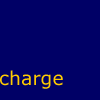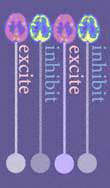
 |
|
Personal
Experiences
Famous People with epilepsy links
|
Professor
Susan Greenfield In
epilepsy there is a miniature brain storm of certain groups of brain cells
that can lead to convulsions. This virtual explosion of electricity can
be detected on an EEG used subsequently by neurologists to locate where
damaged brain tissue lies. Not only does the EEG show what brain waves
look like but it shows how they vary.The eeg is important for studying
not just normal brain activity but brain disorders as well, such as epilepsy. The
brain is built up from single neurons in increasingly complex circuits. Within our brains there are some hundred billion neurons. To get an idea of just how big a hundred billion is, the Amazon rain forest offers an appropriate analogy. The Amazon rain forest stretches for 2,700,000 square miles and it contains a hundred billion trees.
There are about as many trees as neurons in the brain. But the metaphor need not stop there: if we now consider the huge number of connections between neurons, then we could say that there are about as many as leaves on the trees in the Amazon jungle. It is virtually impossible to imagine on a global scale the fervour of chemical and electrical activity, even if only 10 per cent of our hundred billion neurons were signalling at any one moment.
|
|
|
| Brain
Chemistry Just imagine that a signal - an electrical impulse - travelling at some 220 miles per hour, arrives at the end of the axon, and hence at the synapse. As soon as the action potential, the electrical signal, invades the end of the axon, it creates the right conditions by which acetylcholine is released into the synapse.Once released acetylcholine diffuses easily through the watery salty liquid outside all neurons, (the extracellular fluid) crossing the synapse as readily as a boat might cross a river The original electrical signal, which was converted to a chemical one, now needs to be converted back to an electrical impulse. |
 |